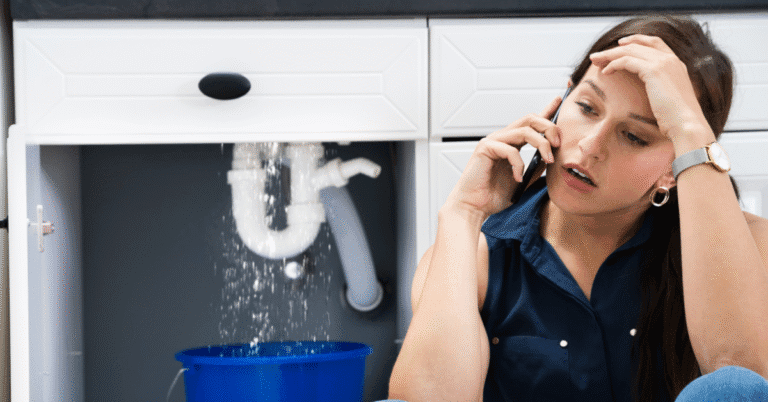
Home plumbing problems happen to everyone, but not every leak or clog qualifies as a true emergency. Knowing when to take urgent action versus when to schedule a routine repair can save homeowners in Central Oregon thousands of dollars in damage—and prevent dangerous situations. When a plumbing issue threatens your safety, property, or access to essential services like water and heat, it becomes an emergency.
In this guide, we’ll break down seven critical signs you’re facing a real plumbing emergency, what immediate steps to take, and why contacting a trusted local plumber—such as Einstein Pros—can make all the difference. We’ll also include internal links to trusted resources to help you prepare and protect your home.
Why Recognizing a Plumbing Emergency Matters
Many homeowners hesitate before calling for help, either unsure of the severity or trying to avoid service costs. But delays during a real emergency can result in burst pipes, structural water damage, mold growth, and hazardous conditions. A clear understanding of emergency scenarios empowers you to act fast, protect your home, and avoid major repairs.
1. Uncontrolled Water Leaks or Burst Pipes
A slow drip from a faucet may be scheduled for a regular appointment—but uncontrolled water flow, especially from a main supply line or burst pipe, is an immediate emergency. If water is pouring through ceilings, pooling on floors, or flooding basements, the structural integrity of your home is at risk.
Emergency Action:
Immediately locate and shut off the main water valve. Once contained, call for urgent plumbing service. Delays may lead to warped flooring, drywall destruction, and electrical hazards.
2. Sewer Backups or Foul-Smelling Drains
Sewer-related issues are among the most hazardous emergencies. A gurgling toilet, wastewater backing into tubs, or foul odors rising from drains suggests a sewer line problem. Raw sewage carries bacteria and health risks, making it a situation no homeowner should attempt to resolve on their own.
Why It’s an Emergency:
Sewer backups contaminate living areas and require professional sanitation, pipe inspection, and potentially trenchless repairs.
3. No Running Water in the Home
Losing hot water is inconvenient—but losing all water access represents a serious emergency. Water is essential for daily living, sanitation, cooking, cleaning, and heating. The issue could stem from a frozen pipe, mainline break, or severe blockage.
Winter Concern in Central Oregon:
During freezing months, pipe systems are especially vulnerable. Failure to restore water access quickly can worsen ice damage and cause burst pipes within hours.
4. Risk of Flooding or Structural Damage
Even if you don’t see water gushing, certain plumbing problems silently threaten your home’s structure. Signs like wall bulges, ceiling discoloration, inconsistent water pressure, or hissing sounds in walls may indicate hidden leaks. Silent pressure buildup can cause pipes to rupture suddenly.
Emergency Tip:
Never ignore moisture signs in ceilings or walls—structural repairs can cost far more than emergency plumbing service.
5. Sudden Drop in Water Pressure with Other Symptoms
A brief dip in water pressure can result from high demand. However, if pressure drops drastically alongside muddy water, sputtering faucets, or banging pipes, it may indicate a broken line or major obstruction.
Pressure Changes Can Signal:
- Underground water line breaks
- Pipe corrosion or collapse
- Severe mineral blockage
A rapid pressure change can quickly evolve into pipe failure—acting immediately can prevent full-scale rupture.
6. Gas Line or Water Heater Emergencies
Plumbing systems often include gas connections, especially in water heaters. If you smell gas, hear hissing near a line, or see pilot light failure with heat loss, evacuate and contact emergency services before calling a plumber. Gas-related plumbing emergencies pose immediate fire and health risks.
Water Heater Leaks:
A leaking water heater tank or pressure-relief valve that won’t stay closed can also be dangerous. Hot water flooding may scald surfaces and damage surrounding structures.
7. Toilet Overflow with Sewage or Wastewater
All homeowners occasionally face a clogged toilet, but an overflow containing wastewater or repeated backups across multiple drains is an emergency. When wastewater cannot exit through the mainline, it returns through the lowest exit—often bathtubs or floor drains.
Health Warning:
Exposure to wastewater can spread bacteria, parasites, and viruses. Do not attempt to plunge repeatedly if sewage is present—professional clearing and sanitization are required.
How to React to a Plumbing Emergency
Knowing what to do first can limit damage until help arrives:
- Shut off the main water valve
- Cut power in flooded areas to prevent shocks
- Avoid chemical drain products that can worsen damage
- Document damage for insurance (photos/videos)
- Call a licensed emergency plumber
Why Choose Einstein Pros for Emergency Plumbing?
When plumbing disasters occur, homeowners in Central Oregon need a fast, reliable team that knows local homes and weather conditions. Einstein Pros provides:
- 24/7 rapid emergency response
- Licensed, experienced local technicians
- Upfront pricing and transparency
- Expertise in frozen pipes, sewer issues, leaks, and water heaters
To learn more about what to do during severe plumbing situations, visit our Emergency Plumbing Services page.
Prevention: The Best Defense Against Emergencies
Investing in seasonal inspections and routine maintenance can dramatically reduce the chance of emergencies. Consider having your plumbing checked before winter or after major storms to catch issues early.
Final Thoughts
Understanding the difference between a minor plumbing problem and a true emergency could be the key to protecting your property and family. If you notice any of the seven warning signs above, don’t wait. Take immediate action and contact Einstein Pros—your trusted Central Oregon plumbing experts.
Emergencies don’t wait. Neither should you.
Sources:
